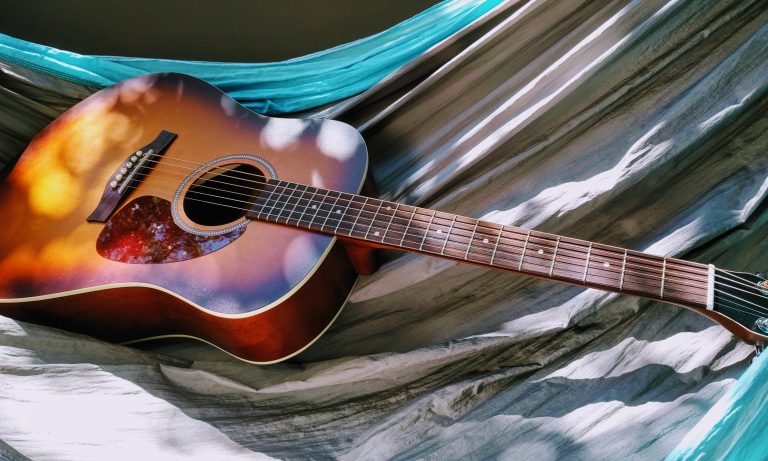
Different Guitar Types Used In Latin Music
25 January, 2024Latin music has become increasingly popular in recent years, with its infectious rhythms and vibrant melodies making it impossible to resist. While the vocals and percussion instruments are often the stars of the show, a key element that adds depth and richness to Latin music is the guitar.
This versatile instrument is used in various genres within Latin American music, such as salsa, bachata, tango, and bossa nova. However, not all guitars are created equal when it comes to playing Latin music. There is much to learn about the different types of guitars commonly used in this genre and how they contribute to creating the signature sound of Latin music.
Whether you’re a seasoned musician or simply have a passion for learning more about different cultures’ musical expressions, keep reading as we take a closer look at the fascinating history and evolution of these iconic instruments in Latin music.
Acoustic & Classical Guitars: The foundation of Latin music
Latin music has a rich history and intricate musical elements that make it stand out as a unique genre. And at the heart of this music lies two distinct types of guitars – the acoustic and classical guitar. These instruments have been essential in shaping the foundation of Latin music, from samba to bossa nova to tango.
One key aspect that sets these guitars apart from others is their use of nylon strings instead of steel or bronze strings found in most Western styles. This creates a warm and mellow sound that perfectly complements the rhythmic complexities present in Latin music.
Apart from their historical significance within specific genres, both acoustic and classical guitars contribute greatly to bringing out complex rhythms within Latin music as a whole. Their tonal qualities allow for intricate strumming patterns while maintaining clarity between notes – crucial elements for creating polyrhythms commonly found in this style of music.
Electric Guitars: Amplifying the rhythm and energy
The integration of electric guitars into Latin music has played a pivotal role in shaping the genre as we know it today. From its humble beginnings as a traditional acoustic-driven sound, Latin music has undergone a remarkable transformation with the introduction of electric guitars into its sonic landscape.
Electric guitars, with their ability to amplify and manipulate sound, have brought an unparalleled level of rhythm and energy to Latin music that was previously unattainable. The most commonly used type is the solid-body electric guitar, which produces a consistent tone that works well with various styles within Latin music, such as salsa, merengue, cumbia, and more.
When looking to buy electric guitars for playing Latin music, there are a few key factors to consider. First and foremost is their ability to produce rich harmonics while maintaining clarity even at high volumes. Another important aspect is versatility – having multiple pickup configurations allows for different tones depending on the style being played.
Twelve-String Guitars: Double the notes, double the flair
The twelve-string guitar is essentially two guitars in one, with six pairs of strings instead of the usual six single strings. This results in a richer and fuller sound as each string is doubled, creating a beautiful chime and sparkle that adds depth to any Latin music composition.
One style of Latin music where the twelve-string guitar truly shines is salsa. In salsa music, the rhythm section typically includes congas, timbales, and bongos, which provide a percussive foundation for the guitar to lay down groovy riffs on top of.
The double strings on a twelve-string acoustic give it an edge over its six-string counterpart by providing more harmonic possibilities within each chord. This allows for intricate strumming patterns and arpeggios that add flavor and energy to any salsa tune.
How to choose the best guitar for your specific needs
For guitar players specifically, there are a variety of guitar types to choose from, each with unique qualities that can enhance or detract from the sound of a Latin music ensemble.
If you’re in the market to buy electric guitars for your Latin music needs, it’s essential to consider factors such as tone, touch, and style. Electric guitars offer a distinct sound that can be particularly well-suited for certain styles of Latin music, such as salsa or flamenco.
However, acoustic and classical guitars may be more appropriate for other Latin styles, like bolero or son. Twelve-string guitars also have their place in Latin music, adding an extra layer of richness and depth to the music.
Ultimately, finding the best guitar for your specific needs requires research, experimentation, and a deep understanding of the music itself.
Which factors are most important when choosing a guitar to be used for Latin music
When it comes to selecting a guitar for playing Latin music, several factors must be considered. One of the primary considerations is the type of guitar to purchase.
Acoustic and classical guitars are prevalent in Latin music due to their natural and warm tones. Electric guitars, on the other hand, are utilized for their versatile and dynamic sound. Lastly, twelve-string guitars are commonly used to create a fuller and more resonant sound.
Ultimately, the decision to buy electric guitars or any other type of guitar depends on what type of Latin music the guitarist intends to play and personal preference. With proper research and experimentation, finding the perfect guitar for playing Latin music can enhance the overall sound and experience.
Follow Sounds and Colours: Facebook / Twitter / Instagram / Mixcloud / Soundcloud / Bandcamp
Subscribe to the Sounds and Colours Newsletter for regular updates, news and competitions bringing the best of Latin American culture direct to your Inbox.

